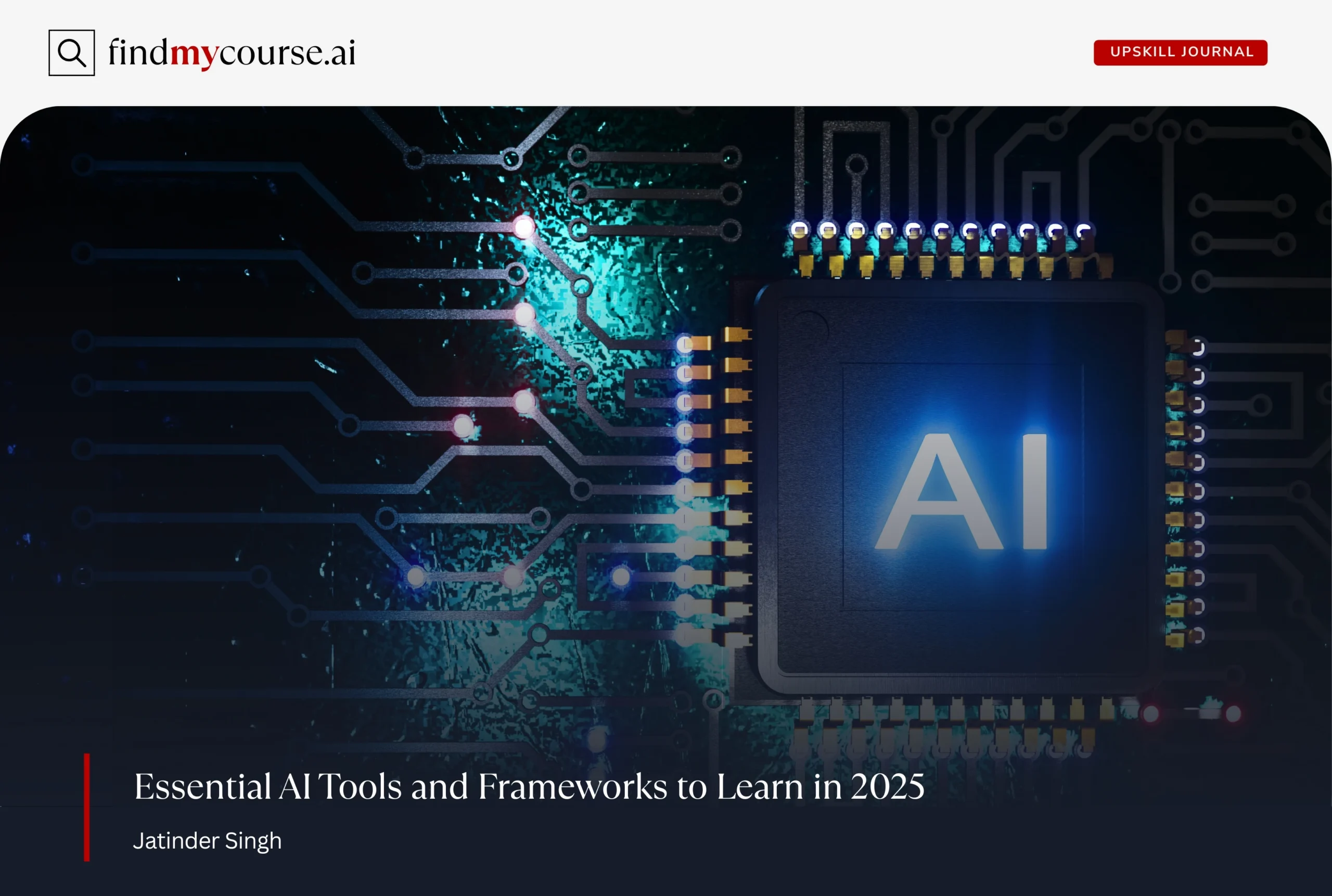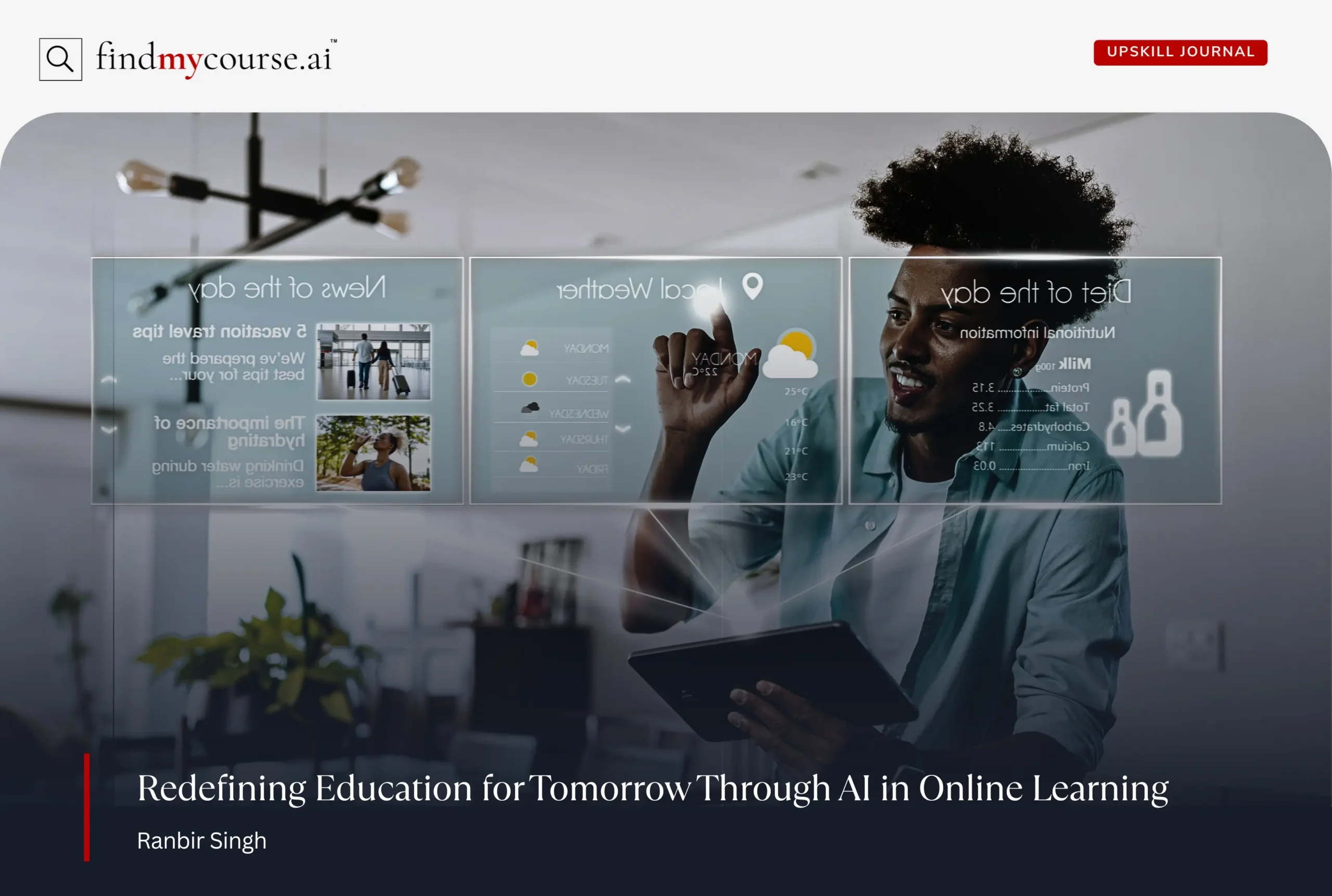Artificial intelligence is no longer a distant idea—it’s shaping how we live, learn, and work right now. From automating tasks to generating creative content, AI is everywhere. But to keep up, you need to learn the technologies that power this shift: the right AI tools and frameworks.
Whether you’re a beginner learning about AI or a professional looking to sharpen your edge, this guide covers the most relevant tools and frameworks to master in 2025.
What Are AI Tools and Frameworks?
Before diving into the top picks for 2025, it helps to understand what we actually mean by AI tools and frameworks—and why they matter.
AI Tools
AI tools are software applications that let you use artificial intelligence without needing to build it from scratch. These tools often come with user-friendly interfaces, meaning you don’t need to be a coder or data scientist to benefit from them. These tools are designed to save time, boost creativity, and enhance productivity.
AI Frameworks
AI frameworks, on the other hand, are the building blocks for creating AI models and applications. They’re used mostly by developers, engineers, and researchers to build, train, and deploy machine learning systems.
In short, AI tools help you use AI, while AI frameworks help you build AI. Learning both can open up a wide range of opportunities, no matter your background.
Top AI Tools to Learn in 2025
These AI tools are making waves in 2025 for being practical, powerful, and easy to use—even if you have no coding background.
1. ChatGPT – The All-Purpose AI Companion
Built on OpenAI’s GPT-4o, ChatGPT is much more than just a chatbot. It can help you write content, brainstorm ideas, solve math problems, plan trips, summarize reports, and even generate code.
In 2025, a standout feature is the ability to create custom GPTs—personalized assistants tailored to your specific tasks. Whether you’re a student, marketer, or software engineer, ChatGPT adapts to your needs and becomes a versatile part of your workflow.
2. Google Gemini – AI That Sees, Hears, and Understands
Deeply integrated with Android, Gmail, Docs, and Chrome, Google Gemini acts like a personal assistant that’s always within reach. Its latest versions—Gemini 1.5 Flash and Pro—can understand and generate not only text, but also images, audio, and video.
Because of this multimodal capability, Gemini excels at things like summarizing YouTube videos, drafting presentations, or powering AI features inside everyday apps—making it a natural extension of your digital life.
3. Claude 4 – Smart, Contextual, and Safe
Anthropic’s Claude 4 is built with deep reasoning and safety in mind. It handles complex, long-form documents with clarity and precision.
If your work involves nuance—think legal briefs, technical reports, or research papers—Claude offers the kind of thoughtful, context-aware support that feels less robotic and more like a collaborative partner.
4. Perplexity AI – Real-Time, Source-Based Search
Perplexity isn’t just another search engine—it’s a research assistant that gives you straight answers with proper citations.
Instead of digging through pages of links, you get instant, reliable information backed by sources. This makes it especially useful for students writing papers, professionals doing market analysis, or anyone who values quick, fact-checked insights.
5. Runway ML – AI for Video Creation Made Simple
Runway ML is revolutionizing video creation with its Gen-3 Alpha model, which can turn plain text prompts into cinematic video clips within seconds.
You don’t need editing experience or fancy gear—just describe what you want to see, and Runway brings it to life. It’s become a go-to tool for filmmakers, educators, and marketers looking to produce high-quality visuals with minimal effort.
Top AI Frameworks to Learn in 2025
If AI tools are the front-end experience, frameworks are the engine behind the scenes. These platforms power the development of intelligent systems—and are essential if you want to build or customize your own AI solutions.
1. PyTorch – Flexible, Fast, and Beginner-Friendly
PyTorch remains one of the most widely used frameworks for building and training deep learning models. Its clean, intuitive interface makes experimentation easy, which is why both researchers and developers love it.
If you’re learning how neural networks work or want to train models from scratch, PyTorch is an excellent place to begin your hands-on AI journey.
2. TensorFlow – Enterprise-Grade Machine Learning
Developed by Google, TensorFlow is designed for building AI systems that scale. It powers everything from image recognition to voice assistants across industries.
With strong support for cloud services, mobile apps, and edge devices, TensorFlow 3.0 (the latest version in 2025) is still a top choice for developers bringing machine learning into real-world products.
3. Hugging Face Transformers – Pretrained Language Models Made Easy
When it comes to working with language—like summarizing, translating, or generating text—Hugging Face Transformers offers an accessible and powerful solution. It gives you instant access to thousands of pretrained models, ready to use with minimal coding.
This framework is a favorite among both beginners and pros, thanks to its plug-and-play simplicity and time-saving capabilities.
4. LangChain – Build Smart, Tool-Using AI Agents
LangChain is designed to help developers create AI agents that can reason, use tools, remember information, and interact with APIs or databases.
Whether you’re building an advanced chatbot, a virtual assistant, or a multi-step automation system, LangChain lets you go far beyond basic question-and-answer interactions.
5. Weights & Biases – Track, Visualize, and Improve Your Models
Think of Weights & Biases (W&B) as a dashboard for your AI experiments. It helps you monitor training performance, compare model versions, and collaborate seamlessly with your team.
Trusted by top research labs and companies, W&B gives you deeper insights into how your models behave—so you can iterate faster and improve smarter.
Emerging AI Technologies to Watch in 2025
In 2025, a new wave of AI technologies is gaining attention—especially in open-source ecosystems and autonomous agent development. Here are two tools and two frameworks that are reshaping the AI landscape:
Tools
- LLaMA 3 (Meta) – An open-source large language model designed for high performance and flexible deployment. LLaMA 3 is ideal for privacy-sensitive environments, academic research, and startups that need full control over their AI systems.
- OpenDevin – An AI-powered developer assistant that can write, test, and execute code autonomously. Inspired by Cognition’s Devin, OpenDevin acts as a coding co-pilot, automating routine software tasks and boosting developer productivity.
Frameworks
- AutoGen (Microsoft) – A framework for building multi-agent systems where AI models can collaborate, reason, and complete complex tasks. It’s a key player in the shift toward autonomous, task-oriented AI systems.
- LangGraph – A new framework for building stateful, graph-based language model applications. LangGraph allows developers to create conversational agents that track memory, follow logic, and integrate external tools—all with persistent context.
These technologies reflect the future of AI: open-source, autonomous, and deeply customizable.
How to Get started with these AI tools and frameworks.
You don’t have to learn everything at once. Many free and paid platforms offer beginner-friendly tutorials on all these AI tools and frameworks. Here’s a simple plan to begin:
- Choose one tool or framework that matches your goal
- Take an intro course or follow beginner tutorials
- Try small, hands-on projects to apply what you learn
- Build a portfolio to track your progress
Recommended Beginner Courses to Start Learning AI in 2025:
- edX – AI for Everyone (IBM): A beginner-friendly, non-technical intro to AI tools like ChatGPT and image generators.
- University – CS50’s Intro to AI with Python (Harvard): A free, self-paced course teaching core AI concepts using Python, PyTorch, and OpenAI tools.
Final Thoughts: Build Your Future with AI Skills
Getting into AI doesn’t have to feel overwhelming. It’s all about staying curious, learning step by step, and growing at your own pace. In a world that’s moving fast, it’s steady progress that makes the real difference. From no-code assistants to powerful frameworks, the tools highlighted here are shaping the future of how we work and create. So pick one, start experimenting, and let your skills grow with the world around you. And if you need help along the way, our AI assistant is just a question away.


